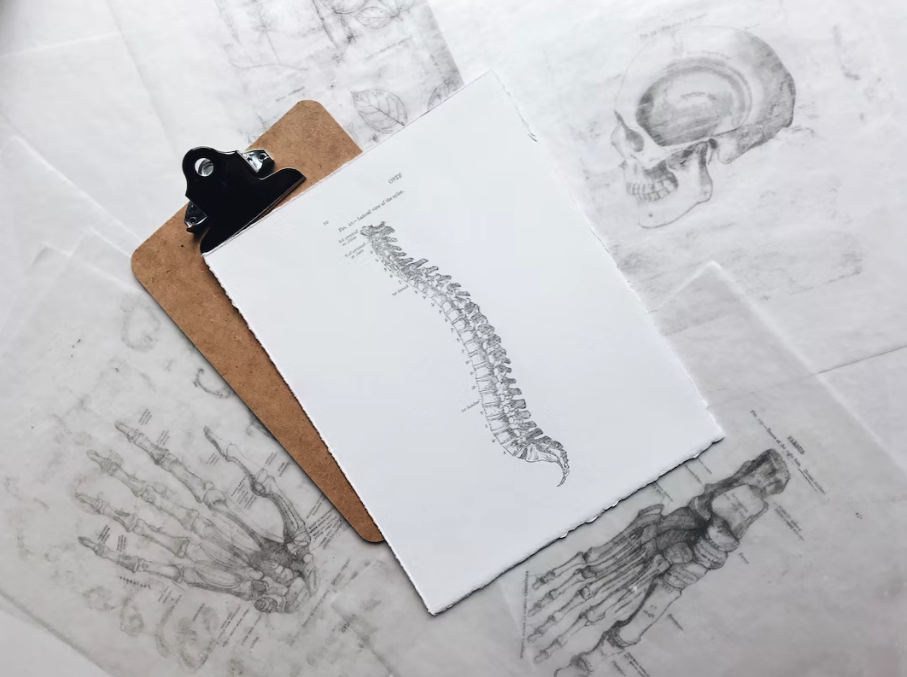Kinesiology and Ergonomics: A Powerful Duo for Workplace Health and Productivity
Luke Curtis July 24, 2023
Ergonomic Professionals rely on the principles of kinesiology to optimize workplace conditions and promote the well-being of employees. By incorporating the understanding of human movement and biomechanics, ergonomics professionals play a crucial role in designing work environments that align with the needs and capabilities of workers. Through the application of kinesiology principles, these experts strive to prevent injuries, enhance productivity, and foster healthier workplaces.
The Intersection of Ergonomics and Kinesiology
Ergonomics professionals recognize that the human body's biomechanics and physiological responses significantly impact job performance and well-being. By drawing upon kinesiology principles, which encompass the study of human movement and the musculoskeletal system, ergonomics professionals gain valuable insights into the body's limitations, strengths, and functional capacities. This knowledge serves as a foundation for creating ergonomic solutions that optimize the interaction between workers and their work environment.
Understanding Human Movement and Biomechanics
Kinesiology provides ergonomics professionals with a deep understanding of how the human body moves and functions. By considering factors such as posture, joint mechanics, and muscle activation patterns, ergonomics professionals can assess the physical demands of various job tasks. This knowledge enables them to identify potential risks and design interventions that reduce the likelihood of musculoskeletal disorders (MSDs) and other work-related injuries.
Applying Kinesiology Principles to Ergonomic Design
In the realm of ergonomic design, kinesiology principles guide the creation of work environments that promote optimal human performance and minimize the risk of injuries. Ergonomics professionals leverage their knowledge of human movement to determine appropriate workstation configurations, task design, and equipment selection. They consider factors such as proper alignment, range of motion, and force exertion, ensuring that workers can perform tasks efficiently and without undue strain.
Preventing Injuries through Proactive Ergonomics
Ergonomics professionals, guided by kinesiology principles, take a proactive approach to injury prevention. By conducting thorough ergonomic assessments, they identify potential risk factors within the work environment. This involves evaluating the physical demands of job tasks, assessing worker capabilities, and considering individual factors such as anthropometry and medical history. With this information, ergonomics professionals can recommend modifications to workstations, tools, and workflows, mitigating the risk of MSDs and promoting long-term worker health.
Facilitating Rehabilitation and Return-to-Work
When injuries do occur, ergonomics professionals with a foundation in kinesiology collaborate with healthcare providers and rehabilitation experts to facilitate the safe and effective return of injured workers to their job roles. By applying kinesiology principles, they assess the injured worker's functional capacity and evaluate the ergonomic compatibility of their role. This comprehensive approach allows for the identification of necessary workplace adaptations, modifications, and gradual reintegration strategies, enabling a smooth transition back into the workforce.
Continuing Education and Skill Development
Ergonomics professionals recognize the importance of continuous education and skill development to stay at the forefront of their field. They actively seek opportunities to expand their knowledge of kinesiology principles and apply them in their practice. Engaging in professional development programs, attending conferences, and staying informed about advancements in both ergonomics and kinesiology enable these professionals to deliver evidence-based interventions and recommendations to promote optimal worker well-being.
Final Thoughts
The integration of kinesiology principles within the field of ergonomics empowers professionals to create work environments that prioritize worker health, safety, and productivity. By drawing upon their understanding of human movement and biomechanics, ergonomics professionals design ergonomic solutions that align with the capabilities and limitations of workers.
Through proactive injury prevention, rehabilitation support, and ongoing professional development, these professionals uphold the principles of kinesiology to optimize workplace well-being and foster sustainable, healthy, and thriving organizations.
Looking for an Ergonomic Consultant in San Diego? Contact Postured Ergonomics today and learn how you can reduce your ergonomic risk.
Frequently Asked Questions (FAQ)
Q1: How does understanding kinesiology help ergonomics professionals in their work? A1: Understanding kinesiology allows ergonomics professionals to assess and evaluate human movement, biomechanics, and the physical capabilities of workers. This knowledge helps them design ergonomic solutions that align with the body's needs, reducing the risk of injuries and promoting optimal performance.
Q2: Can kinesiology principles be applied to all types of workplaces? A2: Yes, kinesiology principles are applicable to a wide range of workplaces. Whether it's an office setting, manufacturing facility, or healthcare environment, understanding human movement and biomechanics helps ergonomics professionals create tailored solutions that address the specific demands of each workplace.
Q3: How do ergonomics professionals integrate kinesiology principles in ergonomic design? A3: Ergonomics professionals integrate kinesiology principles by considering factors such as posture, joint mechanics, muscle activation, and functional capacities of workers. They use this knowledge to design workstations, tools, and workflows that support optimal movement patterns and reduce the risk of musculoskeletal disorders.
Q4: Can ergonomic interventions based on kinesiology principles improve worker productivity? A4: Yes, ergonomic interventions rooted in kinesiology principles can enhance worker productivity. By designing work environments that reduce physical strain and promote proper movement patterns, workers experience less fatigue and discomfort, leading to increased efficiency and productivity.
Q5: How do ergonomics professionals contribute to injury prevention? A5: Ergonomics professionals contribute to injury prevention by conducting comprehensive ergonomic assessments to identify potential risk factors. By analyzing job tasks, worker capabilities, and ergonomic compatibility, they recommend modifications to workstations, tools, and processes to minimize the risk of musculoskeletal disorders and other work-related injuries.
Q6: Are kinesiology principles only relevant to injured workers' rehabilitation? A6: Kinesiology principles are applicable both in injury prevention and rehabilitation settings. In injury rehabilitation, ergonomics professionals leverage kinesiology principles to evaluate the functional capacity of injured workers, assess the compatibility of their roles, and recommend adaptations to facilitate a safe and successful return to work.
Q7: How do ergonomics professionals stay updated on advancements in kinesiology and ergonomics? A7: Ergonomics professionals stay updated by actively engaging in continuing education programs, attending conferences, and staying informed about research and developments in both kinesiology and ergonomics fields. This commitment to ongoing learning ensures they can provide evidence-based interventions and recommendations to enhance workplace well-being.

